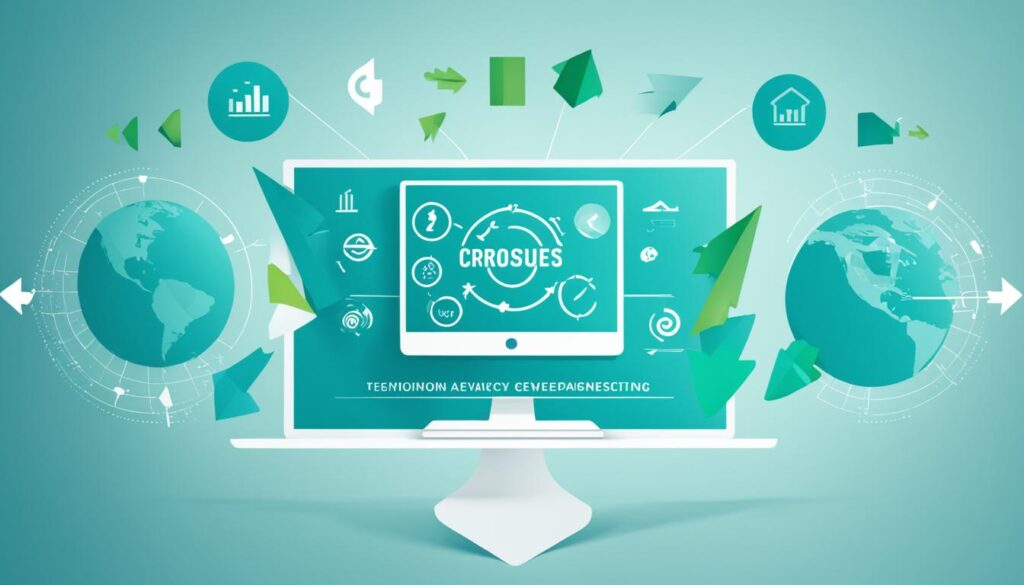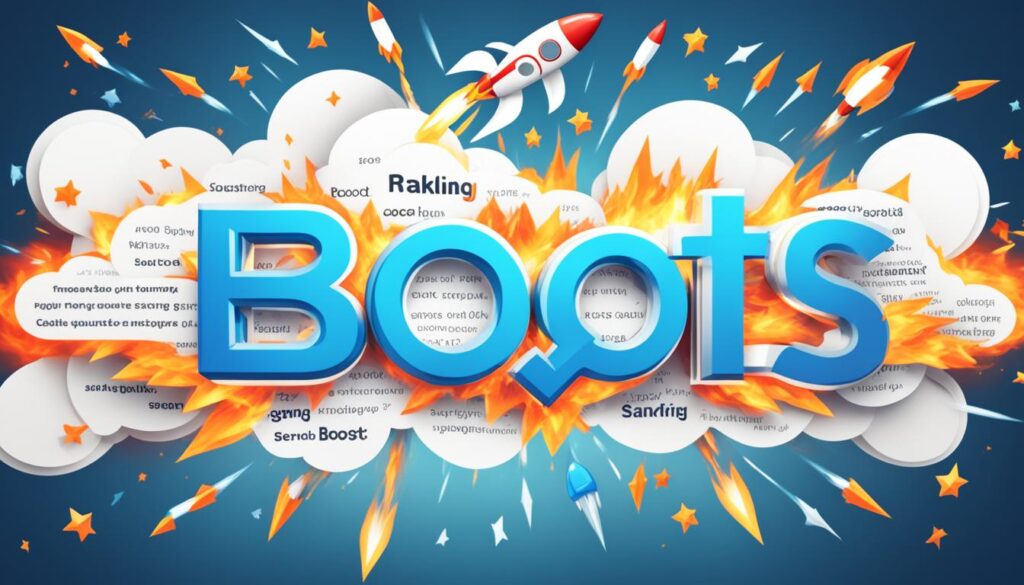Are you looking to expand your online presence and reach a wider audience? Do you want to boost your brand visibility and increase your marketing impact? In today’s digital age, traditional advertising methods can only take your business so far. To truly maximize your reach, you need to harness the power of digital advertising.
Digital advertising is a multi-faceted approach that utilizes various online platforms and techniques to promote your products, services, or brand. It encompasses strategies such as search engine optimization (SEO), content marketing, social media marketing, pay-per-click (PPC) advertising, influencer marketing, video marketing, analytics and data analysis, remarketing, as well as chatbots and AI-driven solutions.
With the vast array of available options, you might be wondering: which digital advertising strategies are the most effective? How can you ensure that your message reaches the right audience? And, perhaps most importantly, how can you stand out from the competition in the crowded digital landscape?
Join us as we explore the world of digital advertising and uncover the strategies and techniques that can help you maximize your reach, increase brand visibility, and achieve your marketing goals. From SEO to influencer marketing, we will delve into each aspect, providing insights and practical tips that will empower you to take your online marketing efforts to new heights.
So, are you ready to unlock the untapped potential of digital advertising? Let’s dive in!
Key Takeaways:
- Digital advertising encompasses a range of techniques and approaches to promote products, services, or brands using digital channels.
- Key strategies in digital advertising include SEO, content marketing, social media marketing, PPC advertising, influencer marketing, video marketing, analytics, remarketing, and chatbots/AI-driven solutions.
- It is essential to tailor your digital advertising strategies to your goals, target audience, and industry to maximize reach and increase ROI.
- Regularly assessing campaign performance and adapting strategies is crucial in the ever-evolving digital landscape.
- By leveraging the right digital advertising techniques, you can expand your online presence, increase brand visibility, and connect with your target audience effectively.
Search Engine Optimization (SEO)
Search Engine Optimization (SEO) is a crucial aspect of digital advertising, aimed at optimizing websites and online content to improve their visibility in search engine results pages (SERPs). By implementing effective SEO strategies, businesses can enhance their organic reach and attract more targeted, high-quality organic traffic to their websites.
One of the key elements of SEO is keyword optimization, which involves researching and targeting keywords that are relevant to the business and its target audience. By incorporating these keywords naturally throughout the website content, businesses can increase their chances of ranking higher in search engine results.
Another important aspect of SEO is website optimization, which focuses on improving the overall structure, functionality, and user experience of a website. This includes optimizing title tags, meta descriptions, headers, and URLs, as well as improving site speed, mobile-friendliness, and navigation.
Creating high-quality and informative content is also a key component of SEO. Search engines prioritize websites that offer valuable and engaging content to users. By consistently producing high-quality articles, blog posts, videos, and other types of content, businesses can establish their authority in their industry and attract organic traffic.
“SEO is not just about keyword stuffing or manipulating search engine algorithms. It’s about providing valuable content and enhancing the overall user experience.”
-John Mueller, Webmaster Trends Analyst at Google
In addition to these strategies, SEO also involves other techniques such as link building, social media integration, and optimizing for local searches. By employing a holistic approach to SEO, businesses can improve their online visibility, drive more organic traffic, and ultimately, achieve better conversions and ROI.
| Benefits of SEO | Challenges of SEO |
|---|---|
|
|
Content Marketing
Content marketing is a powerful strategy that involves creating and sharing valuable, informative, and engaging content to attract and retain your target audience. By crafting compelling blog posts, articles, videos, infographics, and podcasts, you can effectively showcase your expertise and provide valuable insights to your audience.

When it comes to content marketing, the key is to offer content that is truly valuable to your audience. This means creating pieces that address their pain points, answer their questions, or provide solutions to their problems. By doing so, you build trust and establish yourself as an authority in your industry.
Through blog posts and articles, you can delve into topics in depth, share industry trends, and provide actionable tips and advice. These types of written content are highly searchable and allow you to optimize for relevant keywords, boosting your website’s visibility in search engine results.
Valuable content not only educates your audience but also engages them, encouraging them to take action and develop a deeper connection with your brand.
Visual content, such as videos and infographics, offers a different way to convey information and captivate your audience. Videos allow you to demonstrate your products, showcase customer testimonials, or share behind-the-scenes glimpses of your business. Infographics, on the other hand, present data and statistics in a visually appealing and easily digestible format.
Podcasts: Engaging Audio Content
Podcasts have gained immense popularity in recent years. They provide a platform for you to share industry insights, interview experts, and engage with your audience through audio content. Podcasts are a convenient and accessible way for your audience to consume valuable information while on the go.
When sharing your content across various platforms, it’s important to tailor the format and distribution to each channel. For example, you might provide a brief summary and link to your blog post on social media, while on your website, you can embed videos and provide download links for podcasts.
Benefits of Content Marketing
Content marketing offers several benefits for your business:
- Builds brand awareness and recognition.
- Drives organic traffic to your website.
- Establishes trust and credibility with your audience.
- Generates leads and increases conversions.
- Encourages social sharing, expanding your reach.
By consistently delivering valuable content, you can nurture your audience, strengthen relationships, and ultimately drive business growth.
Format Examples for Content Marketing
| Content Format | Platform | Benefits |
|---|---|---|
| Blog Posts | Website | Improves SEO, educates readers, establishes expertise |
| Videos | Social media, YouTube | Engages visually, demonstrates products, shares testimonials |
| Infographics | Website, social media | Presents data in a visually appealing way, easy to share |
| Podcasts | Website, podcast platforms | Offers audio content, convenient for on-the-go listening |
When developing your content marketing strategy, it’s essential to understand your target audience’s preferences and interests. By creating valuable content that resonates with them, you can drive engagement, establish your brand, and achieve your marketing goals.
Social Media Marketing
Social media marketing is a powerful strategy that allows us to connect with our target audience on popular platforms such as Facebook, Instagram, Twitter, LinkedIn, and TikTok. By effectively utilizing these platforms, we can engage with our audience, increase brand visibility, and drive valuable traffic to our website.
One key aspect of social media marketing is the development of a content calendar. This helps us plan and organize our social media posts, ensuring a consistent and cohesive message across all platforms. By strategically creating and scheduling content, we can maintain a regular presence and keep our audience engaged.
In addition to regular content creation, running paid advertising campaigns on social media is another effective way to reach a larger audience. These campaigns allow us to target specific demographics and interests, maximizing the reach of our messaging. By analyzing the performance of these campaigns through analytics, we can make data-driven decisions to optimize our paid advertising efforts.
Interacting with followers and responding to comments and messages is crucial for building relationships and fostering engagement on social media. By actively engaging with our audience, we can cultivate a sense of community and increase brand loyalty.
Here are some key benefits of social media marketing:
“Social media marketing allows us to directly reach our target audience, build brand awareness, and drive website traffic. By leveraging popular platforms such as Facebook, Instagram, Twitter, LinkedIn, and TikTok, we can effectively engage with our audience and grow our online presence.”
Social media platforms offer a variety of features and tools to enhance our marketing efforts. From live videos and stories to polls and interactive content, we can leverage these features to create exciting and engaging experiences for our audience.
The Power of Social Media Advertising
Running paid advertising campaigns on social media platforms provides us with a cost-effective way to reach a wider audience. By using targeting options such as demographics, interests, and behavior, we can ensure that our ads are seen by the right people.
Here’s a breakdown of the benefits of social media advertising:
- Increased brand visibility and reach
- Precise targeting options
- Cost-effective compared to traditional advertising
- Ability to track and measure campaign performance
- Opportunity to drive website traffic and conversions
Overall, social media marketing plays a crucial role in our digital advertising strategy. By leveraging platforms like Facebook, Instagram, Twitter, LinkedIn, and TikTok, we can connect with our audience, share valuable content, and drive meaningful engagement. Through the use of content calendars, paid advertising campaigns, and analytics, we can refine our approach and maximize the impact of our social media efforts.

Pay-Per-Click (PPC) Advertising
When it comes to driving targeted traffic and maximizing conversions, pay-per-click (PPC) advertising is a highly effective strategy. With PPC, businesses have the opportunity to bid on specific keywords and display ads to a targeted audience. This cost-effective approach ensures that companies only pay when users click on their ads, making it a cost-efficient investment.
PPC advertising can be implemented through various platforms, including Google Ads and Facebook Ads. By strategically bidding on relevant keywords, businesses can position themselves in front of their ideal customers, increasing brand visibility and driving qualified traffic to their websites.
Google Ads is a popular choice for PPC advertising, offering businesses the ability to showcase their products or services at the top of search engine results pages (SERPs). With Google Ads, companies can target specific keywords related to their industry or offerings, ensuring that their ads are seen by users actively searching for relevant information.
“PPC advertising allows businesses to reach a specific audience and drive qualified traffic to their websites. By bidding on keywords, companies can position themselves in front of individuals actively searching for their products or services.”
Similarly, Facebook Ads provide businesses with a powerful platform to reach their target audience. With advanced targeting options, companies can define their ideal customer based on demographics, interests, and behaviors. This helps ensure that ads are displayed to users who are most likely to engage with the brand.
One of the key benefits of PPC advertising is the ability to track and measure campaign performance. Through robust analytics platforms, such as Google Analytics, businesses can monitor the effectiveness of their PPC campaigns. This data-driven approach allows for ongoing optimization and refinements, ensuring that advertising budgets are allocated to the most successful strategies.
Overall, PPC advertising is a valuable tool in any digital advertising arsenal. By bidding on keywords and displaying targeted ads, businesses can maximize their reach, increase brand visibility, and drive qualified traffic to their websites, all while maintaining a cost-effective approach to advertising.
Key Benefits of PPC Advertising:
- Targeted audience reach through keyword bidding
- Cost-effective approach: pay only when users click on ads
- Increased brand visibility and website traffic
- Advanced targeting options on platforms like Google Ads and Facebook Ads
- Trackable and measurable campaign performance through analytics
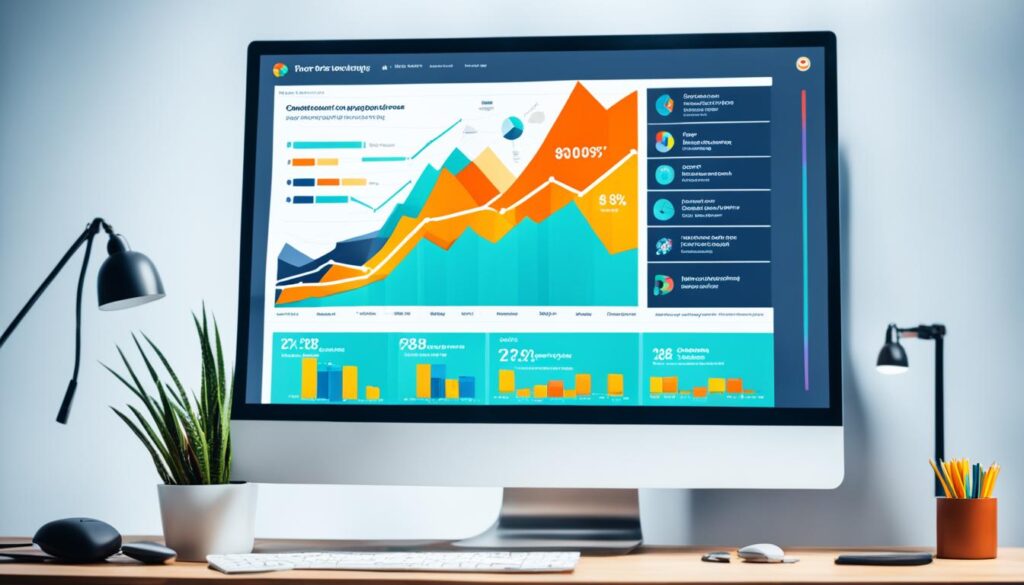
Comparing Google Ads and Facebook Ads for PPC Advertising
| Platform | Targeting Options | Cost Structure | Ad Formats | Analytics |
|---|---|---|---|---|
| Google Ads | Precise keyword targeting | Cost-per-click (CPC) | Text ads, display ads, video ads | Robust analytics with Google Analytics |
| Facebook Ads | Detailed demographic and interest targeting | Cost-per-click (CPC) or cost-per-impression (CPM) | Image ads, video ads, carousel ads | Insights and analytics with Facebook Ads Manager |
Influencer Marketing
Influencer marketing is a powerful strategy that allows brands to collaborate with online influencers who have a strong online presence and a relevant audience. By partnering with these influencers, brands can harness their influence and reach to promote their products or services, ultimately increasing brand awareness and credibility.
Online influencers, often known as social media influencers or content creators, have built a loyal following and have established themselves as trusted voices within their respective niches. They have cultivated a dedicated audience that values their opinions and recommendations. By strategically collaborating with these influencers, brands can tap into their influence and leverage their relationship with their followers.
This form of marketing offers numerous benefits for brands. By partnering with online influencers who align with their target audience, brands can ensure that their message reaches a relevant and receptive audience. This targeted approach maximizes the impact of their marketing efforts and increases the likelihood of conversions.
Furthermore, influencer marketing helps to build brand awareness. When an influencer shares content featuring a brand’s products or services, it exposes the brand to a wider audience, potentially reaching individuals who may not have been aware of the brand previously. This increased visibility contributes to brand recognition and can lead to an expanded customer base.
The collaboration between brands and influencers also enhances brand credibility. Influencers have already established trust with their followers, and when they recommend or endorse a brand, their audience is more likely to trust and consider the brand positively. This association with a trusted authority helps to build credibility for the brand and can influence purchase decisions.
Importantly, influencer marketing allows for creative collaboration between brands and influencers. This collaboration often results in authentic and engaging content that resonates with the target audience. By leveraging the creativity and unique perspectives of influencers, brands can create compelling marketing campaigns that capture the attention of their audience and drive results.
Benefits of Influencer Marketing:
- Increased brand awareness and visibility
- Enhanced brand credibility and trust
- Precise audience targeting
- Opportunity for creative collaboration
- Effective promotion of products or services
Successful Influencer Marketing Campaign Example:
“I recently came across a sponsored post on Instagram by XYZ Cosmetics, featuring beauty influencer Sarah Johnson. Sarah showcased her favorite XYZ products in a tutorial-style video, explaining the benefits and demonstrating how to use them. As a follower of Sarah’s, I trust her recommendations, so I decided to try XYZ Cosmetics myself. I was impressed with the results and have since become a loyal customer. This is a prime example of how influencer marketing can effectively introduce a brand to a new audience and drive conversions.”
When executed strategically and authentically, influencer marketing can be a valuable tool for brands to connect with their target audience, increase brand awareness, and achieve their marketing goals.
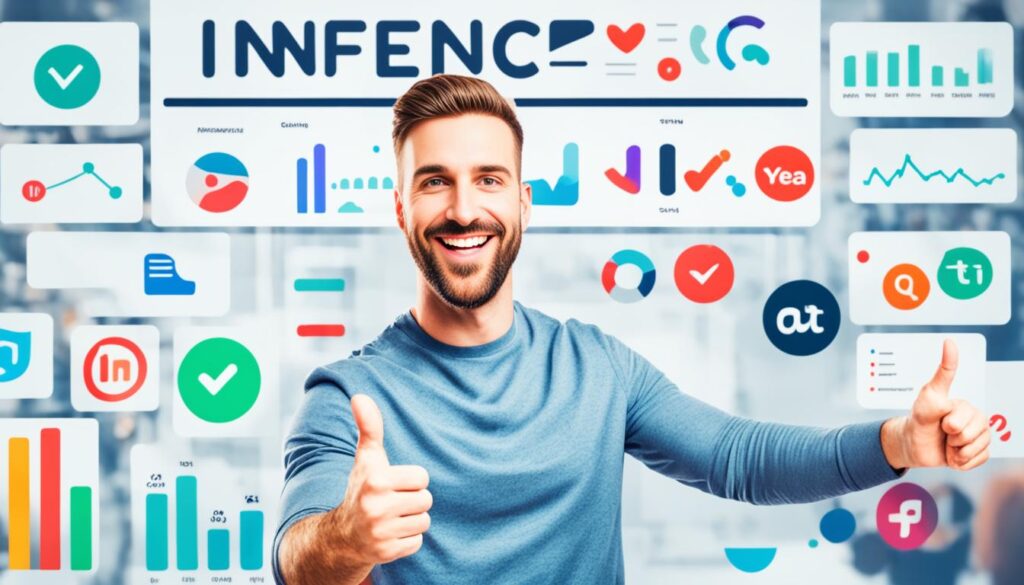
Affiliate Marketing
Affiliate marketing is a powerful performance-based marketing strategy that allows businesses to expand their reach and generate sales and leads through the help of affiliates. Affiliates are individuals or companies who partner with a brand and promote their products or services on their own platforms.
By leveraging the network and influence of affiliates, businesses can tap into new audiences and increase their visibility in the market. This is achieved through various promotional efforts such as blog posts, social media posts, email marketing, and content creation.
The key advantage of affiliate marketing is that it is based on a commission model. Affiliates are compensated for their efforts based on the sales or leads they generate for the brand. This ensures that businesses only pay for results, making it a cost-effective marketing strategy.
Furthermore, affiliate marketing enables businesses to establish mutually beneficial relationships with affiliates who have expertise in specific niches or industries. This allows brands to target a relevant audience and benefit from the affiliate’s credibility and authority.
Affiliate Marketing Benefits:
- Expanded reach and access to new audiences
- Cost-effective, as businesses only pay for results
- Establishment of mutually beneficial relationships with affiliates
- Increased brand visibility and credibility
- Utilization of the affiliate’s expertise and influence in specific niches
“Affiliate marketing is a win-win strategy for both businesses and affiliates. It provides an opportunity to collaborate and grow together, while reaching new customers and generating revenue.” – Jane Smith, Digital Marketing Expert
Overall, affiliate marketing is an effective way for businesses to leverage the power of partnerships and drive sales and leads. By selecting the right affiliates and establishing strong relationships, businesses can tap into new markets and achieve their marketing goals.
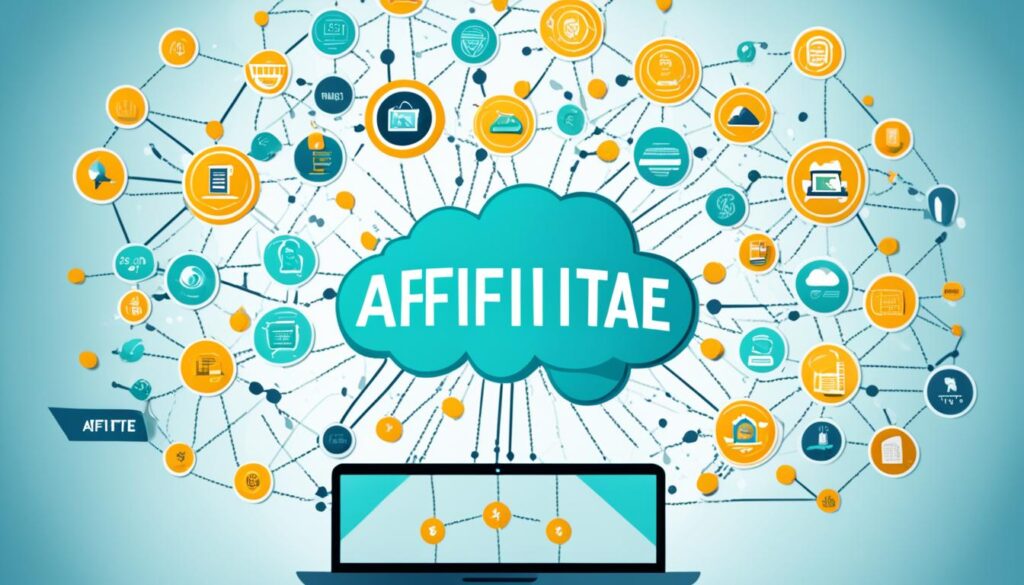
Affiliate Marketing Statistics:
| Statistic | Data |
|---|---|
| Percentage of businesses that use affiliate marketing | 81% |
| Percentage of affiliate marketers who generate income from partnerships | 35% |
| Average affiliate commission rate | 10-30% |
| Revenue generated by affiliate marketing in the U.S. in 2020 | $6.8 billion |
Video Marketing
In today’s digital landscape, video marketing has emerged as a powerful tool to engage audiences and effectively convey a brand’s message. By creating and sharing video content on platforms like YouTube, Vimeo, and social media, businesses can enhance their online visibility and connect with their target audience in a visually compelling way.
Video content is highly engaging and has the ability to captivate viewers, making it an ideal medium for storytelling and showcasing products or services. With the rise of social media platforms, video content has become even more prevalent, with users consuming videos on a daily basis.
Platforms like YouTube and Vimeo have established themselves as go-to destinations for video content, allowing businesses to host their videos and reach a massive audience. These platforms also provide valuable analytics and insights, empowering businesses to measure the performance of their videos and refine their video marketing strategy to align with their goals.
Social media platforms, such as Facebook, Instagram, Twitter, and TikTok, offer additional avenues for businesses to share their video content and connect with their target audience in a more personalized way. Leveraging these platforms allows businesses to tap into the vast user base and maximize the reach of their video marketing campaigns.
An effective video marketing strategy goes beyond just creating videos; it involves crafting engaging and valuable content that resonates with the target audience. By understanding the preferences and interests of the target audience, businesses can create videos that capture their attention and drive meaningful engagement.
Whether it’s a product demonstration, customer testimonial, behind-the-scenes look, or educational content, videos provide a unique opportunity to connect with the audience on a deeper level. The visual and auditory elements of videos make them more memorable, increasing the chances of brand recall and recognition.
By incorporating video marketing into your digital advertising strategy, you can leverage the power of visual storytelling to effectively communicate your brand’s value proposition and engage your target audience.
Video marketing is a dynamic and ever-evolving field, offering endless opportunities for businesses to showcase their products, services, or brand stories. With the right combination of creativity, strategy, and relevancy, video marketing can play a pivotal role in boosting brand awareness, driving audience engagement, and ultimately, achieving marketing success.
Analytics and Data Analysis
In today’s digital landscape, analytics and data analysis are key components of successful digital advertising strategies. By leveraging tools like Google Analytics and social media insights, businesses can gather valuable information and gain insights into their marketing efforts. This data-driven approach empowers us to measure the performance of our campaigns and make data-driven decisions to improve our results.
Measure Performance with Google Analytics
Google Analytics is a powerful tool that provides comprehensive analytics and reporting capabilities. It allows us to track various metrics such as website traffic, user behavior, conversion rates, and much more. By analyzing this data, we can gain a deep understanding of how our digital advertising campaigns are performing and identify areas for optimization.
For example, we can track the number of visits to our website, the sources of traffic (organic, paid, referral), and the pages that receive the most engagement. This information helps us identify which marketing channels are driving the most traffic and which pages are resonating with our audience.
Unlocking Social Media Insights
Social media platforms also provide valuable data and insights that can inform our digital advertising strategies. By leveraging the analytics tools provided by platforms like Facebook, Instagram, Twitter, and LinkedIn, we can gain insights into audience demographics, engagement metrics, and content performance.
For instance, we can analyze the reach and engagement of our social media posts, identify the best-performing content types (videos, infographics, articles), and understand our audience’s interests and preferences. Armed with this information, we can fine-tune our social media marketing strategies and create more impactful campaigns.
Data-Driven Decision Making
Through analytics and data analysis, we can make data-driven decisions that optimize our digital advertising efforts. By evaluating the performance metrics and insights provided by Google Analytics and social media platforms, we can identify areas of improvement and implement targeted changes.
For example, if we notice that a particular marketing channel is driving a significant amount of traffic but has a low conversion rate, we can adjust our strategy to better align with our target audience. We can optimize our ad copy, adjust bid strategies, or refine our targeting to improve conversion rates and drive better results.
Data-driven decision making allows us to continually iterate and improve our digital advertising strategies, maximizing our reach, and ultimately increasing our return on investment (ROI).
| Metric | Description |
|---|---|
| Website Traffic | The number of visits to our website |
| Conversion Rate | The percentage of website visitors who take a desired action |
| Audience Demographics | Insights into the characteristics of our target audience |
| Engagement Metrics | Measures of how users interact with our content |
| Content Performance | The effectiveness of our marketing content |
By analyzing these metrics and making data-driven decisions, we can optimize our digital advertising strategies and achieve our marketing objectives.
Remarketing
Remarketing is a powerful digital advertising strategy that allows us to re-engage with our target audience and encourage action from potential customers who have previously visited our website or interacted with our brand. By strategically targeting these users with personalized ads, we have the opportunity to reconnect with them and guide them towards the desired conversion.
Through remarketing campaigns, we can display relevant ads to individuals who have already shown an interest in our products or services. This tailored approach helps us stay top of mind, increase brand awareness, and reinforce our value proposition to potential customers.
One of the key advantages of remarketing is its ability to segment the target audience based on their previous interactions. We can create customized ad campaigns based on specific user behavior, such as browsing specific product categories, adding items to their cart, or abandoning the checkout process. By understanding these patterns, we can more effectively address users’ needs and concerns, nurturing them towards making a purchasing decision.
Remarketing also allows us to provide personalized incentives and offers to potential customers, further encouraging them to take action. By utilizing dynamic remarketing, we can showcase specific products or services that users have shown interest in, maximizing the chances of conversion.
In addition to traditional display remarketing, we can also leverage other channels such as email and social media to reach our target audience. By integrating remarketing efforts across multiple platforms, we can reinforce our messaging and increase the effectiveness of our campaigns.
Benefits of Remarketing
Remarketing offers several benefits for our digital advertising strategy:
- Increased Engagement: By reconnecting with potential customers who have already shown interest in our brand, we can maximize engagement and encourage them to take the desired action.
- Improved Conversion Rates: Remarketing allows us to target users who are already familiar with our brand, increasing the likelihood of conversion and maximizing our return on investment.
- Enhanced Brand Awareness: By consistently displaying relevant ads to our target audience, we can reinforce our brand message and increase brand recall, improving overall brand awareness.
- Personalized Approach: Remarketing enables us to deliver tailored ads and offers based on users’ previous interactions, increasing the relevance and effectiveness of our campaigns.
- Cost-Effective Strategy: Remarketing is a cost-effective advertising strategy as we specifically target users who have already engaged with our brand, maximizing the efficiency of our budget.
Example Remarketing Campaign
Here’s an example of how a remarketing campaign can be structured:
| Target Audience | Remarketing Ads | Call-to-Action |
|---|---|---|
| Users who added items to their cart but didn’t complete the purchase | Display ads showcasing the abandoned products | Special discount or limited-time offer to incentivize purchase |
| Users who visited specific product pages multiple times | Dynamic ads displaying the viewed products | Encouragement to explore related products or make a purchase |
| Users who previously made a purchase | Upcoming product launches or exclusive offers | Encouragement to become a repeat customer or engage with other products/services |
Chatbots and AI
In today’s fast-paced digital landscape, providing exceptional customer service is vital to the success of any business. That’s where chatbots and AI-driven customer service tools come in. By implementing these innovative technologies, companies can offer real-time assistance, guide customers through the sales funnel, and enhance their overall experience.
AI-powered chatbots are revolutionizing customer service by providing immediate responses to queries and concerns. These virtual assistants are available 24/7, ensuring round-the-clock support for customers. Whether it’s answering frequently asked questions, providing product recommendations, or addressing technical issues, chatbots can handle a wide range of tasks, freeing up valuable time for customer service representatives to focus on more complex inquiries.
Chatbots excel in delivering personalized experiences by leveraging artificial intelligence and machine learning algorithms. They can analyze customer data, previous interactions, and purchase history to offer tailored solutions and recommendations. This level of personalization builds rapport with customers and enhances brand loyalty.
Furthermore, chatbots can guide customers through the sales funnel by offering product information, assisting with the selection process, and even facilitating transactions. This seamless integration of AI and customer service ensures a smooth and efficient buying experience, ultimately enhancing customer satisfaction and increasing conversions.
Implementing chatbots and AI-driven customer service tools not only streamlines customer interactions but also reduces response times, allowing businesses to address customer inquiries in real-time. This instant support significantly improves customer experience and prevents potential frustration or dissatisfaction that may arise from delayed responses.
Key Benefits of Chatbots and AI
- 24/7 availability for customer support
- Immediate responses to customer queries
- Personalized recommendations and solutions
- Guidance through the sales funnel
- Efficient handling of high volumes of inquiries
- Reduced response times
- Enhanced customer experience and satisfaction
| Chatbots and AI in Customer Service | Traditional Customer Service |
|---|---|
| Provides real-time assistance | May have delays in response time |
| 24/7 availability | Limited working hours |
| Consistently delivers personalized experiences | May lack personalization |
| Efficient handling of high volumes of inquiries | May struggle with large influxes of inquiries |
By integrating chatbots and AI into their customer service strategies, businesses can enhance their overall efficiency, deliver seamless experiences, and exceed customer expectations. Embracing these technologies will undoubtedly give companies a competitive edge in the ever-evolving digital landscape.
Conclusion
When it comes to digital advertising, implementing a comprehensive strategy is essential to maximize reach, increase online visibility, and ultimately improve return on investment (ROI). By employing a combination of carefully tailored tactics, businesses can connect with their target audience and stand out in the competitive digital landscape.
To achieve success, it is vital to regularly assess the performance of digital advertising campaigns and make necessary adjustments. As the online world continues to evolve, staying ahead of the curve and adapting strategies accordingly is crucial. This means keeping up with industry trends, embracing new technologies, and continuously refining digital advertising strategies.
By leveraging search engine optimization (SEO), content marketing, social media marketing, pay-per-click (PPC) advertising, influencer marketing, affiliate marketing, video marketing, analytics and data analysis, remarketing, and chatbots and AI, businesses can create a holistic approach to digital advertising. This multifaceted strategy allows for effective targeting, engaging content, and measurable results.
Ultimately, the goal of digital advertising is to maximize reach and online visibility while ensuring a positive return on investment. By employing comprehensive and targeted digital advertising strategies, businesses can achieve these objectives and establish a strong online presence, leading to increased brand awareness, customer engagement, and ultimately, business growth.
